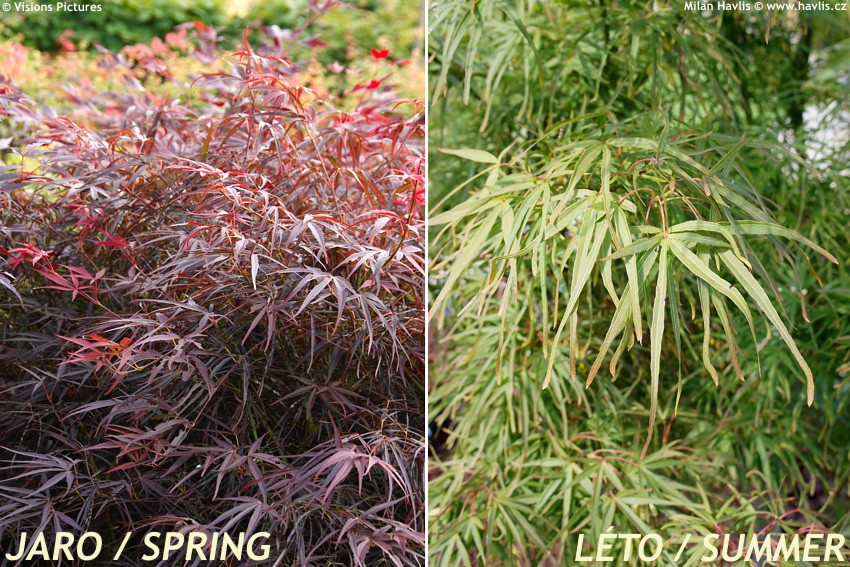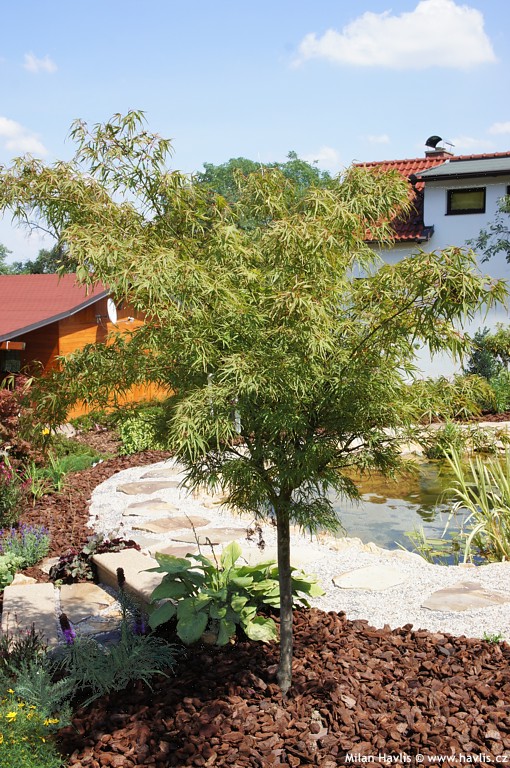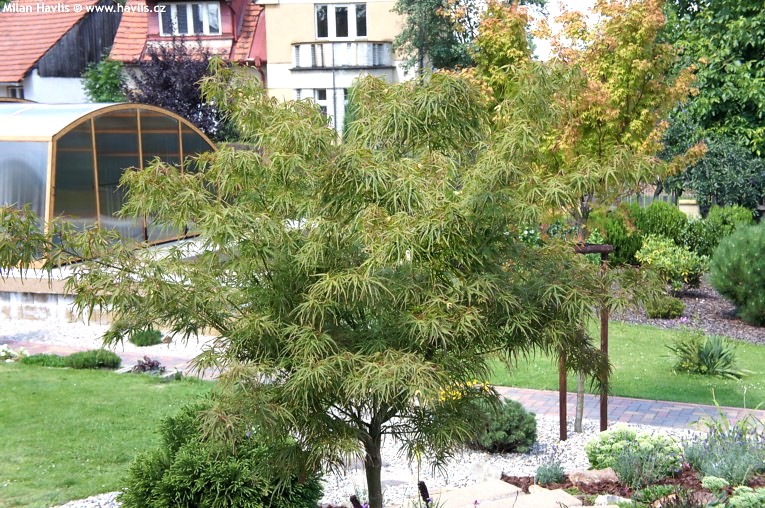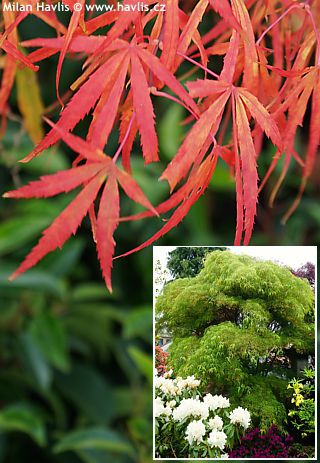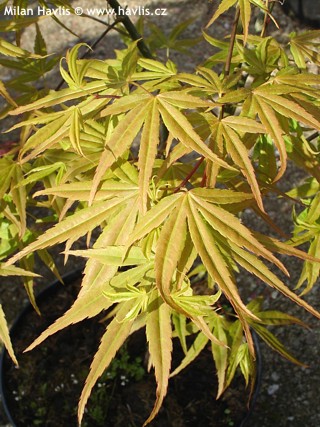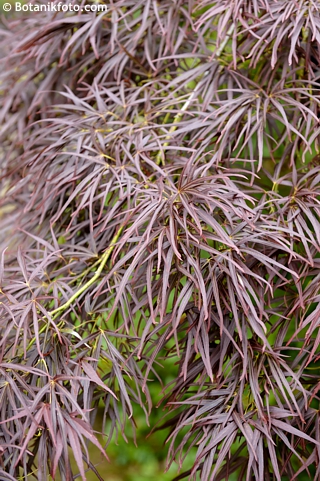Acer palmatum 'RED PYGMY' Japanese maple
size/type
medium-sized shrub,medium-sized shrub
usual height
1-2,5m
usual width
1-2m
leaves
deciduous broadleaf
colour of leaves
flowers
insignificant or non-blooming
location
full to partial sun
USDA zone (lowest)
5b (down to -27°C)
winter protection
for zone 5+6

for zone 7

categorized
Acer
Japanese maples are very decorative and usually low shrubs, occasionally small trees, with attractive foliage and picturesque structure. There are many varieties in various shades of green, chartreuse, golden and yellow, red to maroon, and even multicoloured (variegated). They originate from Asia (Japan, China, Korea), where they have been cultivated for at least two centuries or perhaps even longer, however, they were introduced to Europe only at the beginning of the 19th century, specifically to Great Britain in 1820. Interestingly, the botanist Carl Peter Thunberg described them much earlier, in 1784, because he undertook an expedition to Japan in 1775-1776, discovering new species and collecting seeds and plants. He named the tree Acer palmatum, referring to the leaf shape resembling a human hand with fingers, although it is said that they first reminded him of frog fingers, which is also one of its oldest Japanese names: kaede. The other is momiji (baby hands). The beauty of the colours and shapes of the leaves and trees is reflected in many arts, for example, in the oldest preserved collection of Japanese poetry from the 8th century, the Man'yōshū (Collection of Ten Thousand Leaves). The Chinese poet Wang Wei (699-759) celebrated their beauty in many of his works, and naturally, maples often appeared in ancient paintings, tapestries, porcelain, and wherever classic and traditional decorations associated with the symbolism of these maples were desired: beauty and elegance, serenity, endurance, vitality, and transformation.Description of the plant:
Red Pygmy could be a bit misleading name for this unique Japanese maple. Yes, it is a dwarf variety and it does make rich burgundy red leaves but only in spring. When the days get hotter from May or June onwards in most cases the foliage changes to soft green or almost olive green until autumn, when the leaves turn golden yellow and orange. Nevertheless, they are as beautiful as on all maples from linearilobum group. They are finely cut into long and extremely narrow rays. One might mistake them for bamboo leaves. It grows slowly to about 2m tall and wide, but grafted on a stem can get taller by the height of the stem. Red Pygmy maple is naturally dense and bushy, vase-shaped shrub that needs no or very little pruning. It looks great planted as a small specimen near a Japanese-style pond or any water stream. If you prefer mixed borders make sure that its surrounding plants have different shapes, leaf types, and colours so that each plant has its attention. It is an easy plant that requires no maintenance once established.
Japanese maples prefer acidic to neutral soil, moist but well drained, semi-fertile. For best leaf colouring it needs plenty of sun so make sure the roots are well mulched, too. Owing to its reduced size it is suitable for small gardens and front yards, too, as well as large pots. Fully hardy to -25°C (USDA zone 6), plants older than 5 year to -27°C (USDA zone 5).
Last update 31-12-2012
QUICK PRICE OVERVIEW
CURRENTLY SOLD OUT
WANT TO TRY A SIMILAR PLANT?













